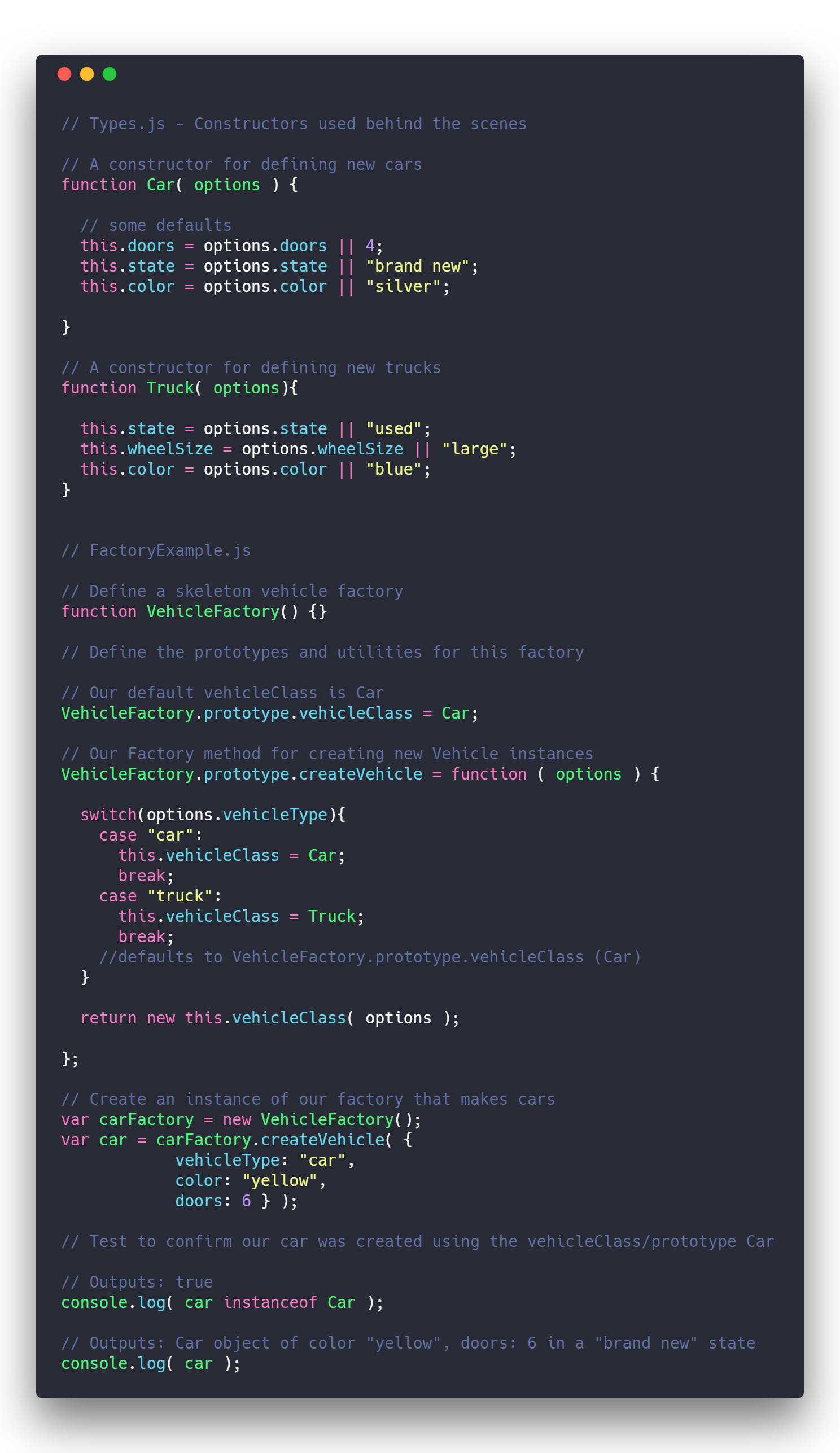

The underlying concept of design patterns has been around in the software engineering industry since the very beginning, but they weren’t really so formalised. This is where design patterns come in.Ī design pattern is a term used in software engineering for a general, reusable solution to a commonly occurring problem in software design. These problems usually have many similarities, and, when trying to solve them, we notice several common patterns. Note: Source code for the implementation of all the design patterns explained here is on GitHub. So you as a reader can pick and choose specific parts (or, in this case, specific patterns) and ignore the ones you are not interested in or are well versed with.

This article is a long read as a whole because of the nature of the subject matter, so I have tried to keep the sections self-contained.

I assume you have a basic understanding of JavaScript and concepts like classes (classes in JavaScript can be tricky), objects, prototypal inheritance, closures, etc. In this article, we are going to talk about design patterns that can be and should be used to write better, maintainable JavaScript code. Replaced images of source code snippets with GitHub gists. Modules should be Immediately-Invoked-Function-Expressions (IIFE) to allow for private scopes - that is, a closure that protect variables and methods (however, it will return an object instead of a function).UPDATE NOTE: Updated the Proxy Pattern example to use ES6 Proxy and Reflect. The module pattern allows for public and private (plus the lesser-know protected and privileged) access levels. One of the many advantages of classes is encapsulation - protecting states and behaviors from being accessed from other classes. This provides loose coupling to support well-structured code.įor those that are familiar with object-oriented languages, modules are JavaScript “classes”. JavaScript modules are the most prevalently used design patterns for keeping particular pieces of code independent of other components.


 0 kommentar(er)
0 kommentar(er)
